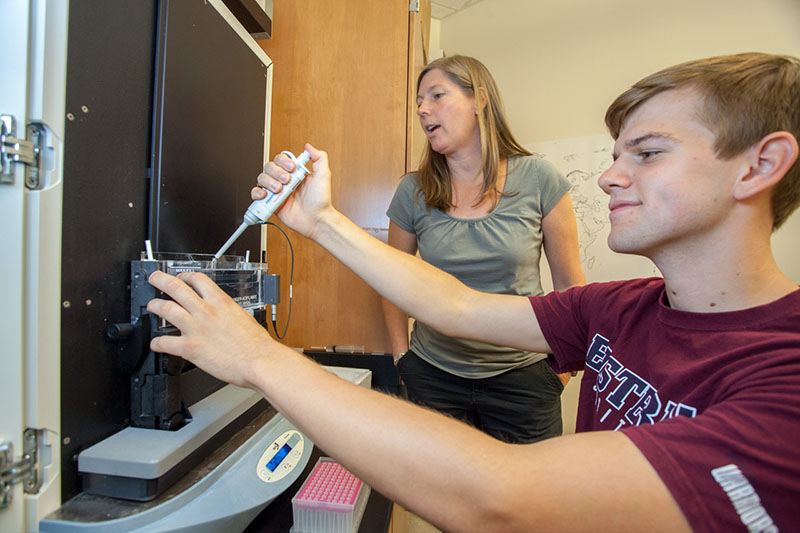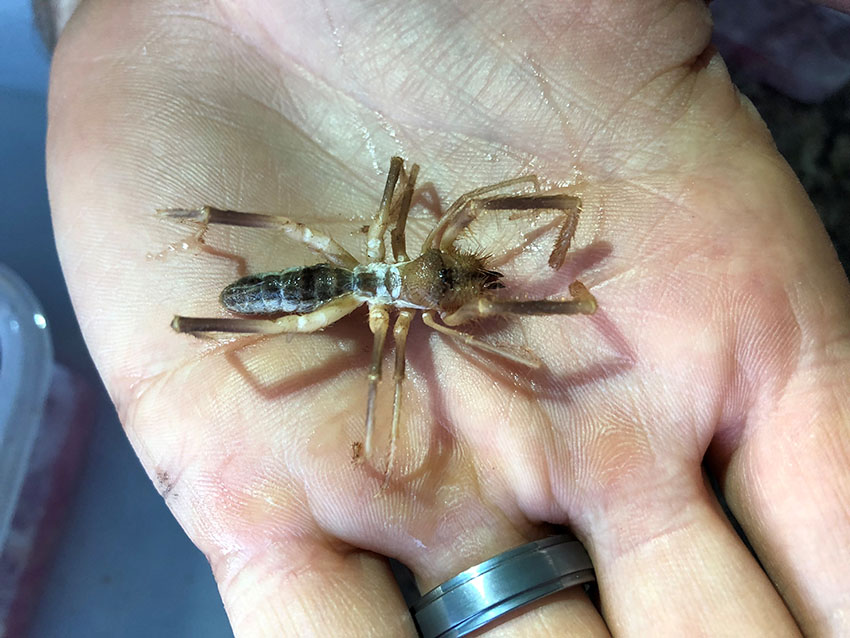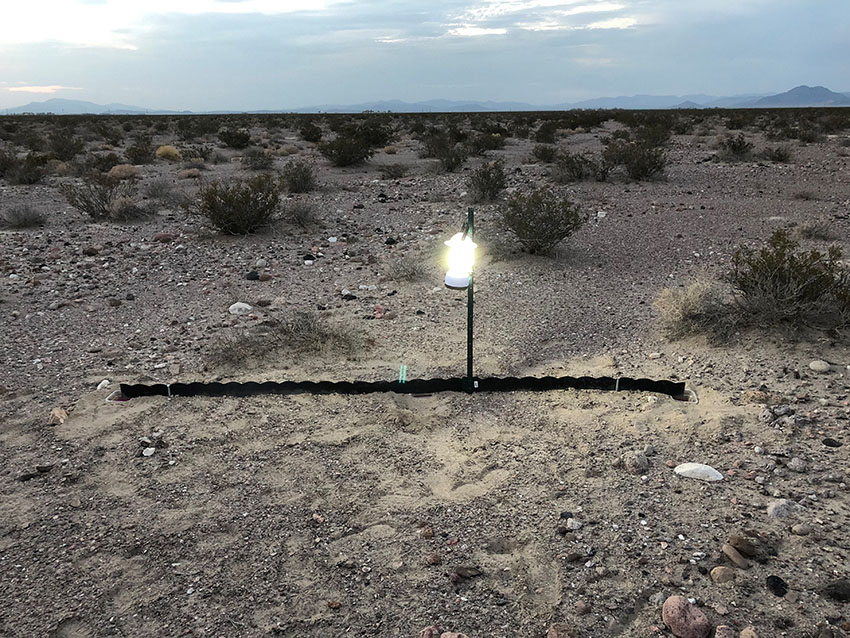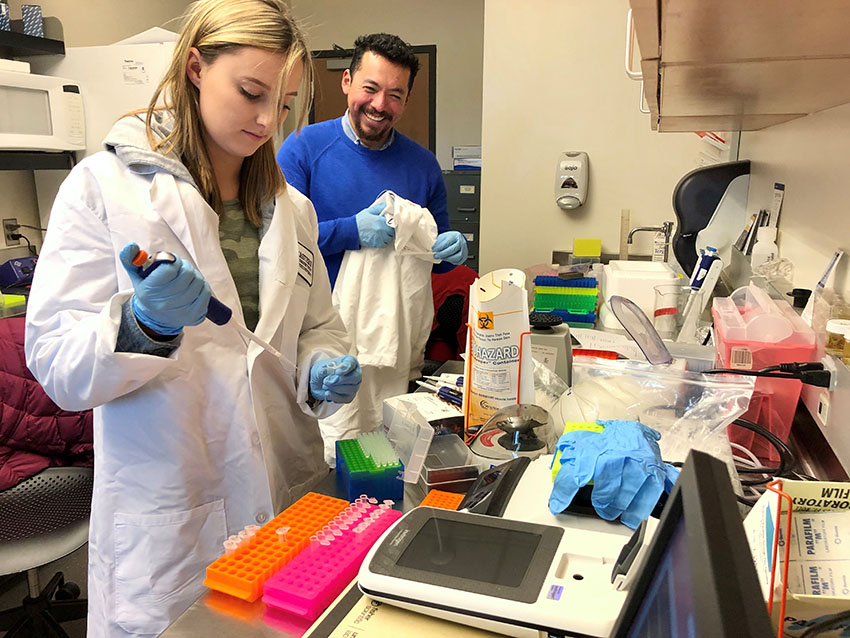- Apply
- Visit
- Request Info
- Give
2 biology research groups publish on camel spiders and endangered seabirds
Written by Bobbi Brown
Published on November 22, 2021
Two alumni-faculty research groups from the Biology Department at Eastern Connecticut State University authored two peer-reviewed articles that were recently published in scientific journals. Jacob Dayton ’19 and Alexsis Powell ’20, along with postdoctoral research fellow Carlos Santibáñez‑López, worked with biology professors Patricia Szczy and Matthew Graham to produce research on camel spiders and endangered seabirds.
The first article is titled “Diversification and post-glacial range expansion of giant North American camel spiders in genus Eremocosta (Solifugae: Eremobatidae)” and was published in the open-access journal "Scientific Reports." The project featured a collaboration with the Denver Museum of Nature and Science.
The research trio--Santibáñez‑López, Powell and Graham--used genomics to study large desert arachnids called camel spiders. The paper represents the first genome-level analysis of any group of camel spiders and revealed insights regarding their evolutionary relationships and responses to climate change. The research was Santibáñez‑López's postdoctoral project, funded by a grant from the National Science Foundation. For the full article, click here.
“I aspire to uncover the arthropod genomic basis of venom evolution,” said Santibáñez‑López, who is now an assistant professor at Western Connecticut State University. “In other words, I’m thrilled to understand the patterns and processes, at the level of their genomes, that led these animals to acquire these mechanisms for defense or predation. I also aspire to keep studying the population dynamics of poorly known arachnids like camel spiders, vinegaroons and mini-vinegaroons.”
“Powell took my Organismal Biology course as a freshman,” said Graham. “I invited her to do research when I saw how enthusiastic she was about animals and biology during an outdoor lab exercise at Eastern’s arboretum.” Powell is now a seventh-grade science teacher.

Dayton, who is a Ph.D. student in the Department of Biology at Tufts University, worked with Szczys on two seabird genetics projects. Their article is titled “Metapopulation connectivity retains genetic diversity following a historical bottleneck in a federally endangered seabird” and was published in the journal "Ornithological Applications."
“Jacob picked up the idea and expanded it into an impressive project that evolved over several years,” said Szczys. The paper explores how conservation genetics help resource managers in the recovery of an endangered population of roseate terns in the northwestern Atlantic. For the full article, click here.
“The mentoring of high-quality undergraduate research is one of Eastern’s greatest strengths,” said Szczys, who is now interim dean of the School of Arts and Sciences. “Working with faculty one-on-one on a scholarly or creative project is a high impact practice that gives students the opportunity to contribute new knowledge or interpretation in their field of interest. This independent but guided creation of new knowledge and understanding develops a way of thinking and a way of working that raises Eastern’s undergraduate researchers to the top of their field, where they find success in the employment market and in competitive post-graduate studies.”
On average, it takes several years for a peer-reviewed scientific paper to be published. The research for these articles was conducted while the alumni were undergraduates at Eastern. According to Graham, students who conduct research and publish works with professors demonstrate high interest in the field and are more marketable.
“If a student is a co-author on a publication, it means the student is probably passionate and dedicated to science, works well as a colleague, and maybe most importantly, finishes what they start,” said Graham.





